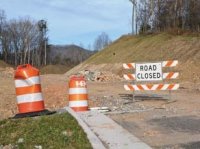Finding a creative way out of the real estate dilemma
By Mark Jamison • Guest Columnist
A fellow once asked me, about a car I was selling, “What’s the least you would take for that car?” I thought for a second and replied, “What’s the most you’d give for it?”
In that exchange was the essence of the market. Buyers want to pay the least they can and sellers want the most they can get and the idea of the market is to find a place where their interests intersect.
In the case of the car we both had information we could go on to determine a fairly narrow range of value for the car. There are published reports of what similar vehicles sell for and there are other bits of information that gave both of us a range in which a realistic price ought to exist. What was left was to consider our individual needs, how much he might want the car versus how badly I needed to sell it.
The parameters of the transaction though were determined by this thing we call a market which is nothing but a confluence of information, need and desire. The market gives the buyer and the seller some assurance that there is a reasonable range of price that can be arrived at by applying the available information to the available supply and demand.
I’ve had several conversations recently with people seeking to buy or sell property here in Jackson County. A question seems to keep coming up, what is anything actually worth? I have a friend who is looking to buy a few acres on which to build a house. He’s found a piece of land that seems suitable and is to his liking. He wants to offer a fair price but because of the failure of the market he has no idea of how to determine what that might be. I happen to know the seller in this transaction, and he too would like to arrive at a fair price but has little means of judging what that might be. Because neither trusts the market, neither is willing to complete the transaction.
Related Items
There are many factors that have contributed to the failure of the market for land here in Jackson County. Prices had reached speculative levels before the overall crash. Many of our normal pricing mechanisms like government valuations reflect these prices, which are clearly no longer valid. Then too we had a number of development companies that to varying degrees had engaged in a game of catching the rising bubble. They offered plans and schemes that probably never would have succeeded but were at the least based on the fiction of ever-rising prices.
These plans and schemes were specifically designed to be attractive to a class of buyers who felt particularly wealthy due to inflated stock, capital, and property markets. These were people who were living an illusion, their wealth was neither liquid nor solid yet their willingness to spend on things like second homes reflected a confidence that simply was not justified.
Protecting the land
While the great property bubble was building there were many here in Jackson County who were concerned about the unfolding events. Thousands of acres of environmentally sensitive land were being slated for development. It seemed that the plans for these developments gave little attention to either environmental consequences or for that matter more prosaic concerns like the ability of local infrastructure to absorb and service the additional development. In addition, the idea of turning Jackson County into a wealthy enclave of gated developments was far from attractive and highly unsettling to people, both natives and those who had relocated here.
Somewhere between the golden goose of high-end gated development on every available parcel and absolute preservation there was likely to be a middle ground. Many of those who supported the development of land use regulations saw those regulations as a means to ensure that development bore the burdens and responsibilities of its impacts as a consequence of reaping profit. Many recognized that some, moderate development offered good solid middle-class jobs in the trades for many long time Jackson County residents. The failure of the boon times was that it overwhelmed the county’s capacity to absorb it. Many of the plans were unrealistic, financed in highly speculative ways and far too nebulous in terms of their care for existing communities and sensitive environments. In addition, many of the developers ignored local economies and local tradesmen in favor of carpetbaggers and firms designed to work quick, cheap and fast as a means of deriving maximum profit to the exclusion of all other considerations.
The crash put an end to all of that. And while many of the speculators, the developers, real estate hucksters, attorneys and financiers who fueled the boom lost heavily, some of those hurt worst were local individuals and communities who were left with high property valuations, higher taxes and a moribund economy.
We’ve moved from a highly inflated market fueled by speculation and untenable assumptions to no market, a sense that no one knows quite what anything should be worth and everyone seems hesitant to engage in even basic economic activity. The uncertainty affects the retirement plans of some, the job prospects of others, and even the fundamental assumptions on which much of the county’s budget is based.
Fixing a damaged market
The problem, it would seem, is that there is a great deal of inventory available (although much of it is compromised by various legal entanglements). Some very large areas that had been slated for high-end development are locked into a legal limbo.
Some of the land most impacted is also some of the most environmentally sensitive. Some of it currently has half done, poorly done infrastructure that threatens a tremendous mess. For examples, one only has to look at the reporting on some of the more informed local blogs. And perhaps even worse is that many of the 7,000-plus lots that were essentially exempted from the land-use regulations exist within these developments.
So, we have an essentially non-functioning market in Jackson County, a damaged economy, and a huge inventory of damaged and legally encumbered land.
I wonder, though, if there isn’t a possible solution that might serve everyone’s interests to some degree or another. The overall public interest might best be served if some of the most sensitive land that was slated for development and is now compromised by legal, financial or environmental complications was transferred into the public trust either through conservation easement or transfer into state or federal parks or game lands.
The first argument one might expect to hear about such a proposal is that the county could not afford to lose the prospective tax base. That same argument was made 40 years ago when much of the land that is now Bear Lake Reserve (or was, since some has since been sold) was offered into the public trust. In retrospect, we can see the loss of opportunity and the costs that development has imposed.
The fact is that a sizable reduction in inventory would actually give the market some basic parameters against which to re-establish itself. The future loss of supposed tax base, certainly no sure thing given recent events, would likely be offset by the faster recovery of local property markets and the associated increase in economic activity.
There are those who might argue that at present the terrain looks quite nice thank you. Development has been halted and the assaults on the environment and our communities have ceased. I would reply that at best that is only temporary and that we have all the elements for another bubble in place, although I would concede that it is an event likely not to occur for perhaps 10 years.
Still, there is a tremendous amount of money, both corporate and private equity, sitting on the sidelines at the moment. The hesitancy of that money to move might just as likely be attributed to wiliness as fear. Someone somewhere is waiting to pick up distressed assets at a bargain and the question isn’t if, it may be when. The ensuing consolidation may actually be worse. There is some indication that parts of the trophy market are, if not recovering, at least evolving. One should remember that those in the top 2 percent of income have actually done quite well of late.
We may have an example of a more savvy investor here in Jackson County. J.P. Kennedy, a software developer for the oil services industry, may be one of the largest single landholders in Jackson County. He sold much of what became Bear Lake to Centex and bought back some of that when Centex failed. It also appears he has been involved at various levels with the Legasus properties.
Mr. Kennedy or some entity that is as equally well resourced may be in a position to consolidate thousands of acres for development. Given the current attitudes of those in power at state and local levels it is likely that government might find itself willing to be accommodating to the desires of ostensibly powerful interests. And for all the good the ordinances did, their creation left avenues large enough to drive a very large bulldozer through for those who might be so inclined.
Unlikely partners?
What’s to be done? Well there might just be an opportunity available provided those with power and those with expertise can come together in some fairly creative way. A couple of banks and a private equity company or two own some pretty worthless paper on several thousand acres. There are any number of lot owners who purchased lots in developments that will never exist. There are claims, counterclaims and foreclosures, tax liens and likely any other number of legal hurdles that might make immediate development of any of this land impossible.
If local, state and federal agencies — along with conservation and preservation organizations — were to put their heads together, it occurs to me that between existing tax credits and incentives, easement possibilities, and possibly even mitigation credits, that a reasonable proposal might be created that would allow the banks and private firms holding what amounts to useless paper to clear their balance sheets fairly quickly. Actually, those developers and investors that didn’t go under might like to participate, since the elimination of inventory and the likely restoration of the market that would follow would be in their interests as well.
We live in an unsettled time. Governments at all levels are cutting programs and expenses. Investors are timid and markets are stymied. The times are difficult, but difficult times often uncover unique opportunities.
(Mark Jamison lives in Webster and can be reached at This email address is being protected from spambots. You need JavaScript enabled to view it..)









